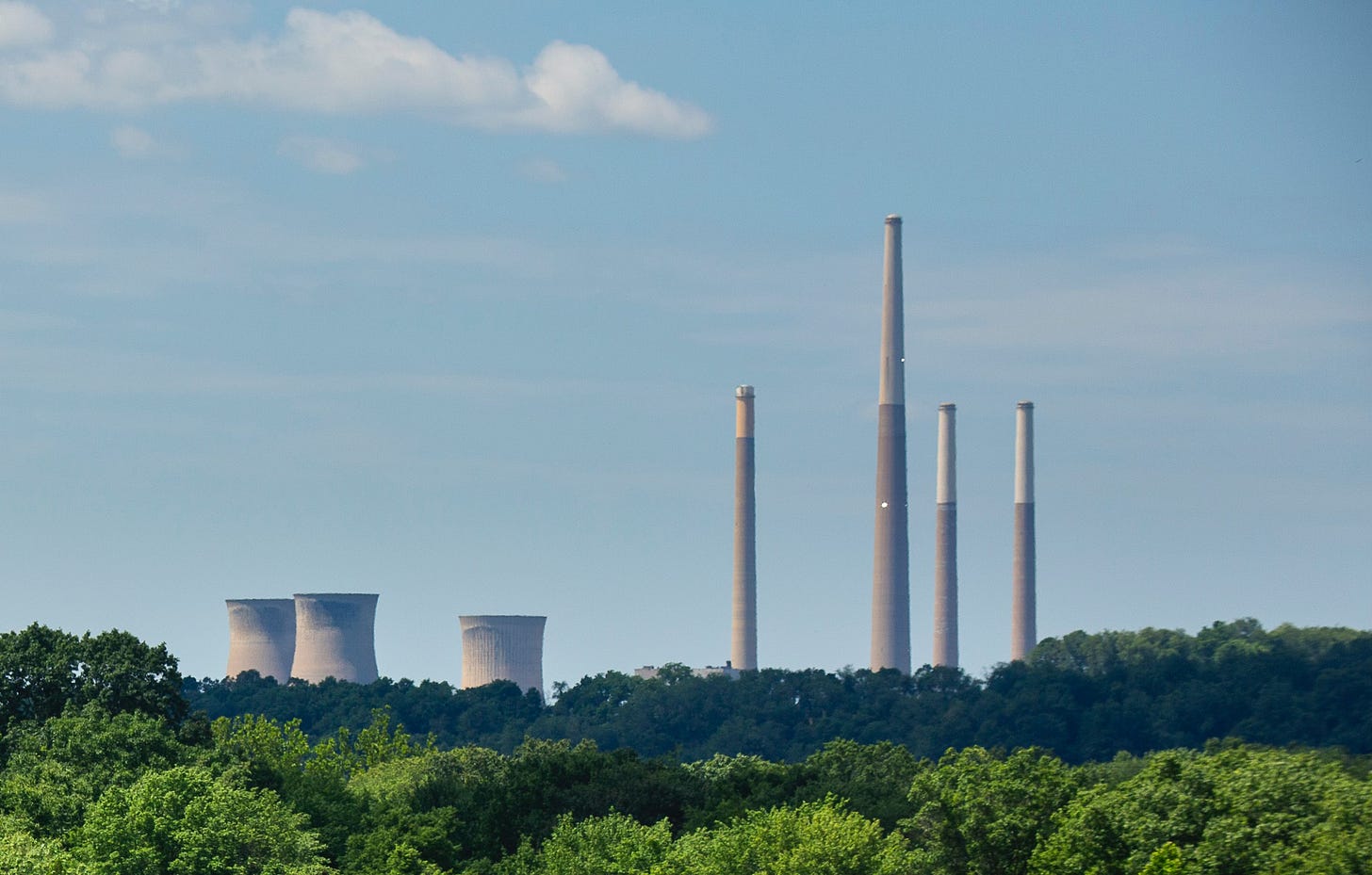Out With the Old
Powering AI without crowding out grid demand.
“AI will probably most likely lead to the end of the world, but in the meantime, there'll be great companies.” – Sam Altman
For decades, the US possessed the world's most sophisticated electricity grid and generated substantially more power than any other country. By 1985, it accounted for 27% of global electricity generation—more than six times China's total. Domestically mined coal formed the backbone of the US grid, providing nearly 57% of total output and serving as a solid foundation for 24/7 baseload power.
Although it may surprise contemporary readers, America's small towns and cities once were proud to host new coal-fired power plants. These facilities were seen as symbols of progress and sources of good-paying jobs, most protected by strong unions and offering above-average wages and benefits. A worker could spend an entire career at one plant, own a home, and put the kids through college free of student debt. They could also easily afford their power bills.
One marker of modernity was the height of a power plant’s smokestacks, with builders often striving to set new records. When Unit 3 came online at the Homer City Generating Station in 1977, its 1,217-foot smokestack became the tallest in the country, a befitting monument to the largest coal plant in Pennsylvania.
In many ways, the arc of Homer City’s history mirrored that of the broader US coal industry. The plant’s first two units came online in 1969, and for more than 50 years, it reliably supported the local grid with robust efficiency. The facility was not without its issues—pollution concerns chief among them—but its long-term fate was largely sealed with the 2008 election of President Barack Obama, the first occupant of the Oval Office to aggressively regulate coal with the explicit intent of removing as much of it from the grid as quickly as possible.
New coal-fired plants became practically impossible to build while the operation of existing facilities grew increasingly difficult. Combined with the enormous volumes of cleaner-burning natural gas unleashed by the shale boom, Obama’s policies pushed coal plants to the brink. After years of losses and multiple ownership changes, the Homer City Generating Station closed for good on July 1, 2023, and its towering smokestacks were demolished this past March. Hundreds of similar plants across the country have met the same fate.
Suddenly, though, many of those shuttered facilities have become significantly valuable, especially the subset located near major shale gas–producing fields across the US. Their value lies in the fact that grid connections and local infrastructure largely remain in place and can be repurposed to run on natural gas. With data center demand for steady baseload power soaring and offtake capacity constraining gas production in the largest US fields, the race is on to breathe new life into old coal plants, power the next generation of AI technology, and unlock even more US gas production.
A pair of proposed projects in particular stand out for their sheer audacity. If successful, they will not only show how AI data centers can integrate themselves into the existing grid without driving up prices for current customers, but also dispel the largely unfounded fear that major US shale gas fields are nearing exhaustion. As part of this transformation, the Homer City Generating Station is about to get a new lease on life, and the details are remarkable. Let’s explore them.



